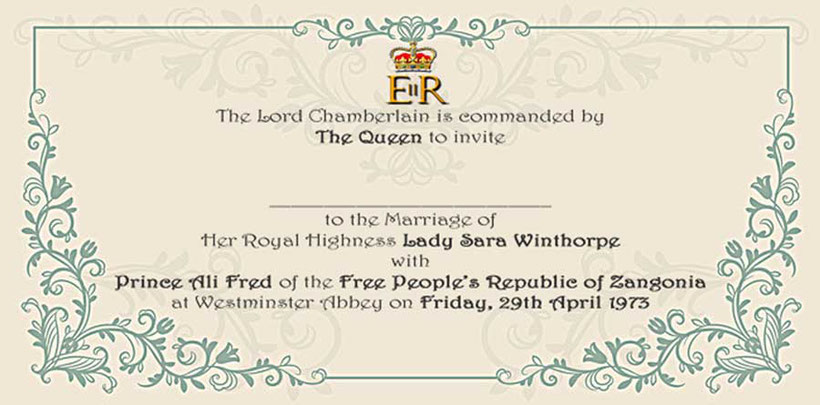LEARN real ENGLISH LANGUAGE & CULTURE - LESSON 5


In LESSON 5 you learn vocabulary for food, eating and cookery.
We will walk you through the vocab for food preparation and the utensils used.
Finally students will practice with communication activities, quizzes and fun games.
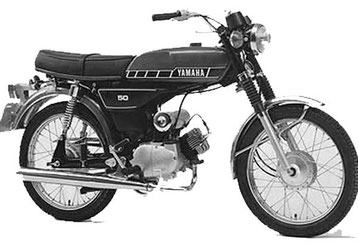
British Culture: The legendary 'FIZZY' Yamaha FS1E motorcycle popular in the 1980s

Zak Washington, the corrupt English teacher, is too lazy to work at the language school, so he is taking his group of students to visit a ‘cultural’ place of interest. Today we are going to…..
THE INDIAN RESTAURANT


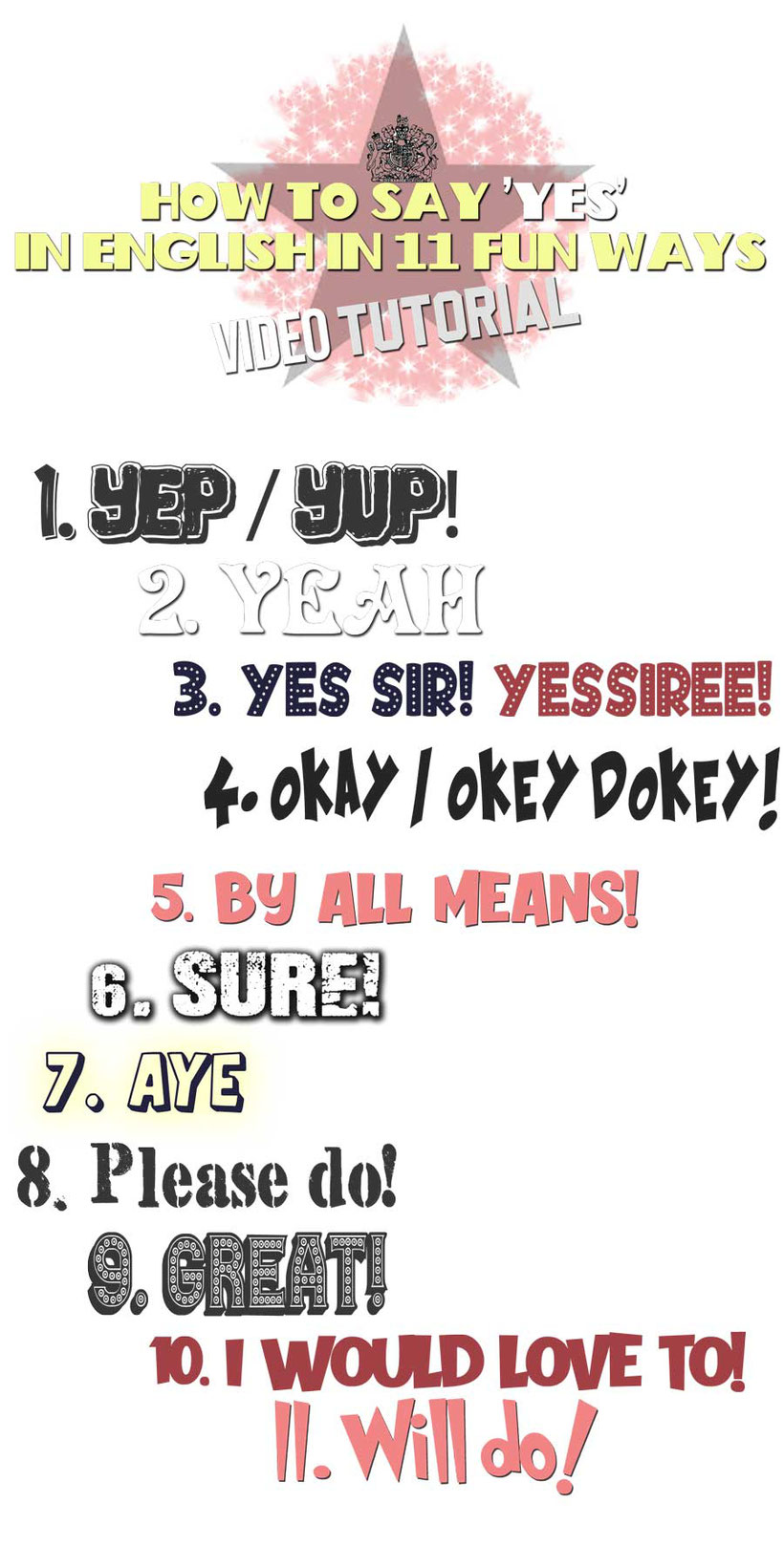
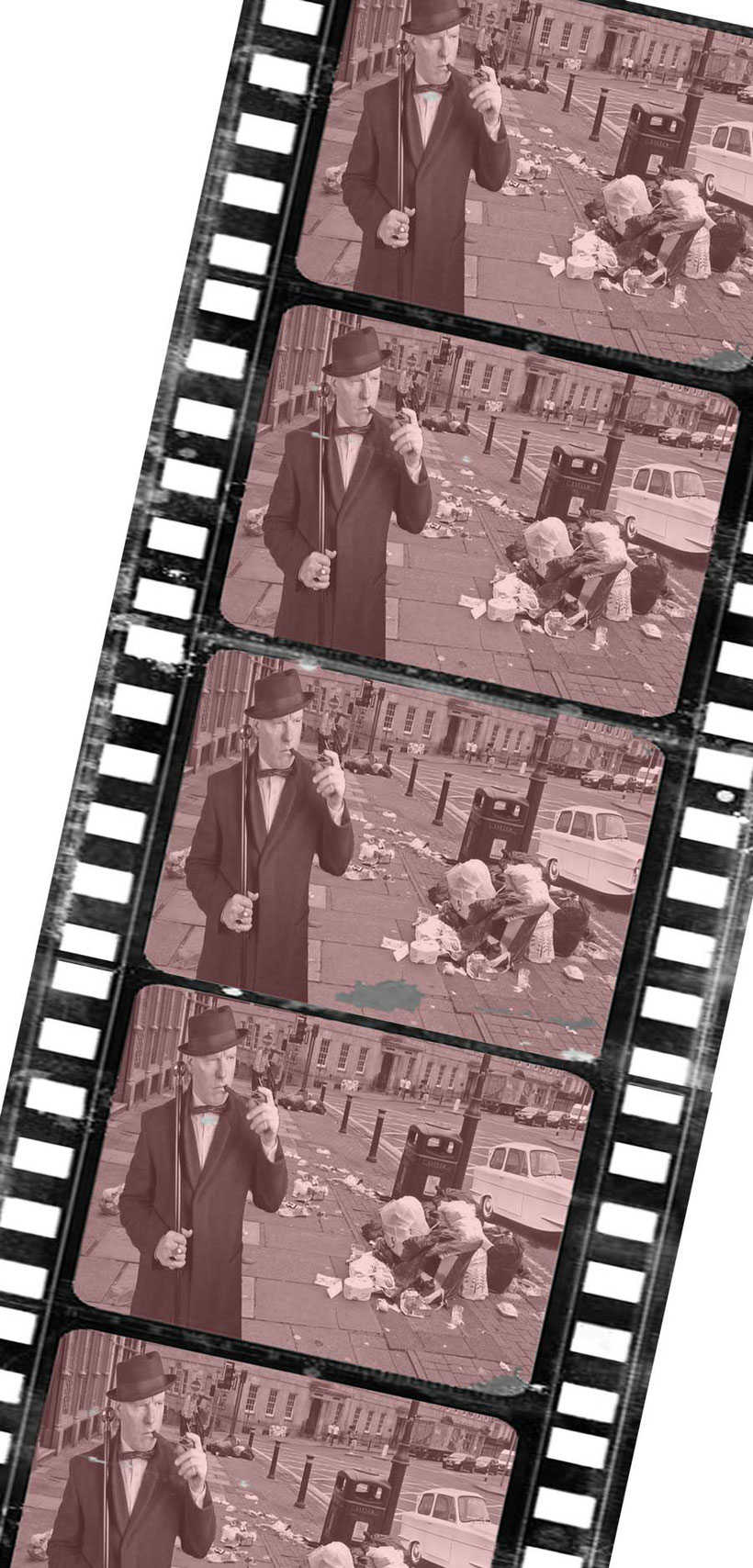
5.1 British culture class discussion Food and eating habits.
#EFL #TEFL #ESOL #ELT #TESOL discussion sheets for students of English

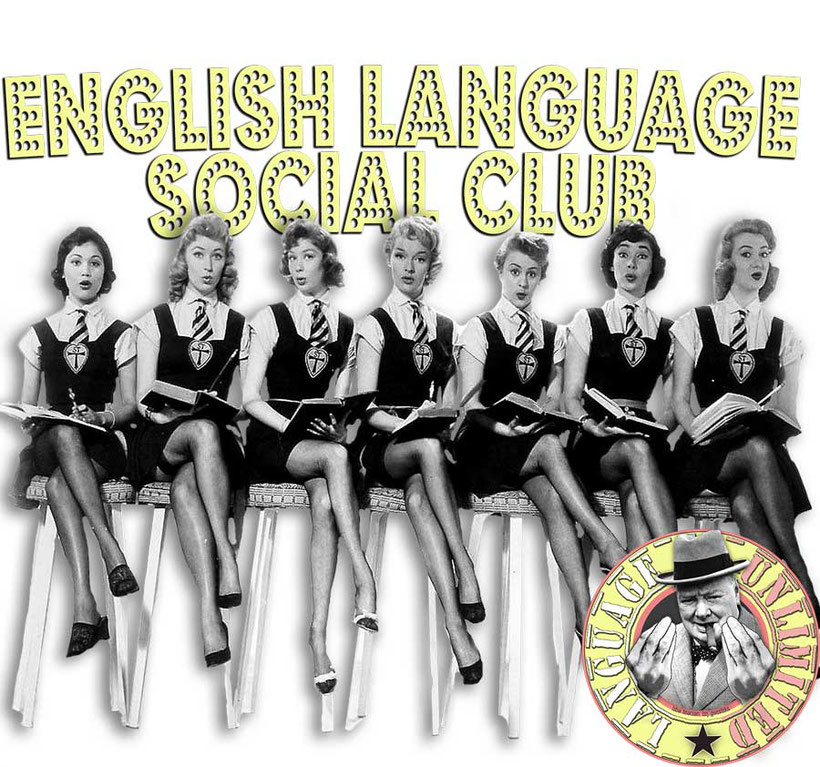

READ the story so far:
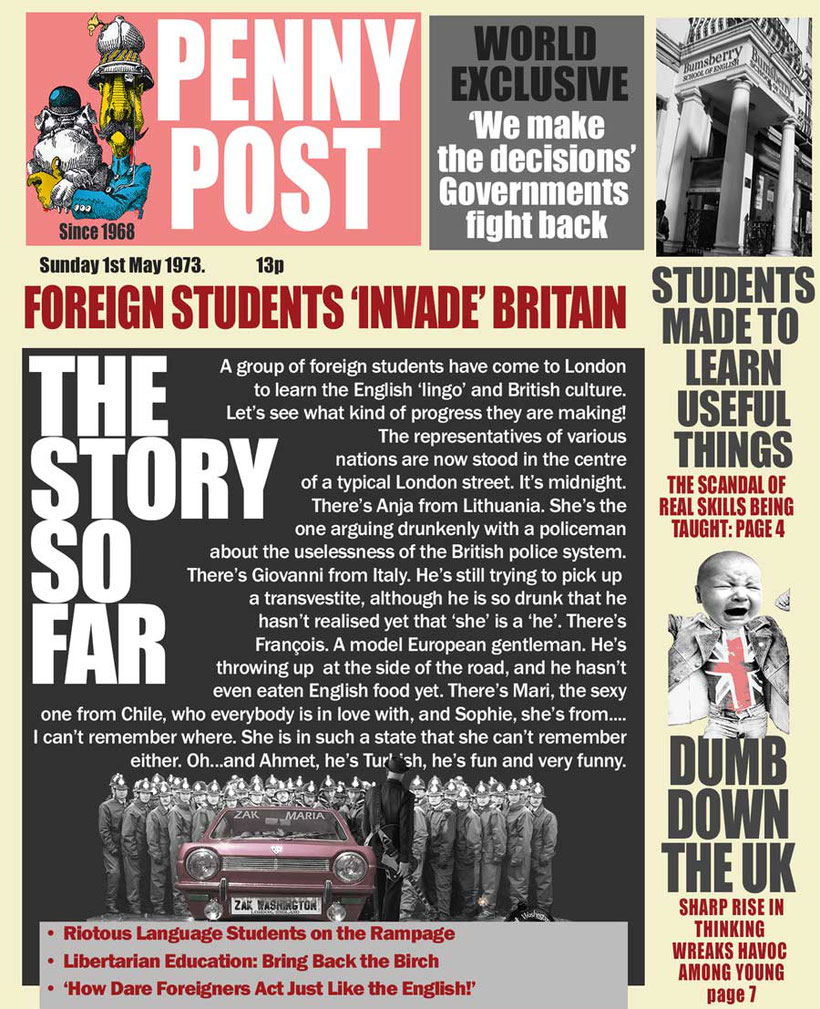
5.2 Confused words What’s the difference between fun and funny?
GLOSSARY
Lingo (noun) (SP: jerga, lengua IT: gergo, lingua) although this looks like an intelligent Latinate word that a linguist might use, it is actually inoffensive slang meaning language. It is often used with the phrasal verb to pick up, which means to learn without serious study. ‘She loves to talk so much that she picked up the language in no time.’
Another useful verb for how well you can speak a language is to get by (in) (SP: sobravivir IT: sopravivere, cavarsela) which means that you have sufficient knowledge to be able to defend yourself , or survive. ‘How to get by in Italian’ is a typical title for a language book. One final expression that you must know: Someone asks you if you speak good English. You want to say that you used to speak it very well, but you haven’t practiced much recently. What would you say? A good answer would be; ‘I’m a little rusty,’ (SP: oxidado IT: arrugginito) (rust is the corrosion or oxidization of metal), or you could simply say, ‘I’m out of practice.’
To pick up (SP: ligar IT: rimorchiare) to have success in forming a romantic liaison with a partner. In other words, if you chat up well, you usually pick up. Now go and practice.
To throw up (SP: vomitar IT: vomitare) to be sick, to vomit, to do the Technicolor yawn, to do the psychedelic yodel etc.


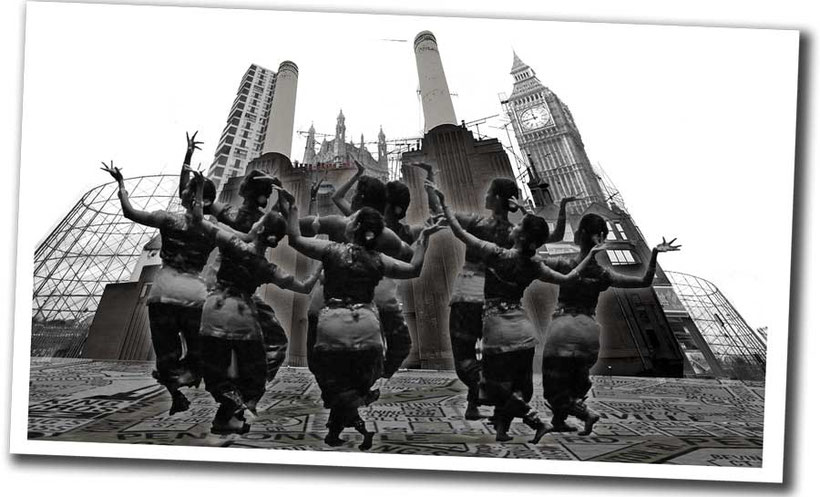
ZAK WASHINGTON: A very good evening to you students! It’s 11.30 p.m. and at this time, after the pub has closed, there’s one place open that serves exquisitely delicious oriental cuisine at affordable (SP: asequible IT: accessibile) prices.
FRANÇOIS: You just want to go because they are the only people who continue serving alcohol! We know you too well!
ZAK WASHINGTON: Errrr... look just follow me and learn... here we are at the world famous Tandoori Place.
FRANÇOIS: No it isn’t! It’s called The Tandoori Palace! You don’t even (SP: ni siquiera IT: nemmeno) know the name. You’ve never been here in your life!
(Inside the restaurant.)
ANJA: I thought that we were going to learn about typical aspects of British culture. Why can’t we go to a typical English restaurant.
ZAK WASHINGTON: Have you ever seen a typical English restaurant?
EVERYBODY: No, thank God!!
ZAK WASHINGTON: Waiter! Five vegetable curries, two vindaloos, an aloo gobi, three chicken tikka masalas, three biriyanis, some poppadoms and eighteen pints of lager! Thank you.
AHMET: In Turkey we cook at home more often. My wife is a very good cooker; she spends all day in the chicken. (5.2 Confused words. Ahmet has made two terrible mistakes. What are they?)

HOW TO TALK ABOUT MEALS IN ENGLISH
Explain the words in italics in the following sentences.
‘I’m tired of playing football. It’s cold. Let’s go and get a tea.’
‘Lady Winthorpe, you are such a darling! Why don’t you come over one night for supper?’
‘I’m a bit peckish[1]. Do you fancy a bit of supper, a cheese sandwich or something?’
‘What’s for dinner tonight mum? What again? But we had that for school dinner today!
‘Oh my God, you Brits eat at such weird times. In the USA, at this time, we’d be eating brunch, in the diner.
‘I can’t play football now. My mum has made tea [2] for me, and I’ve got to go home.’
GLOSSARY
[1] Peckish (SP: hambriento IT: affamato) (adj.) an informal way of saying hungry.
[2] Breakfast, lunch, dinner, tea, supper. (nouns) Meal times in Britain often change names depending on the region in which you live and often on your class background. In many parts of Britain lunch is called dinner. Nobody, for example, says school lunch, but rather we call it school dinner. This is normally eaten in the dining hall at lunchtime, which is about one o’clock. Christmas dinner is also eaten at two or three o’clock and should, therefore, be called lunch too. Dinner also refers to the traditional main family meal. This is often eaten between six and seven in the evening, which is after most British people come home from work. Dinner is eaten a little later, if you eat out or have dinner parties.
In many parts of Britain, especially in working class areas and in informal language, this family dinner is referred to as tea or teatime. Foreign students often think that if someone says, ‘I’m going home for tea!’ they mean they are going home to drink a cup if tea! Wrong! It’s the mealtime at about six or seven o’clock. Another popular myth is that the whole of Britain stops at exactly four o’clock to drink afternoon tea! You’ve been watching too many old films! The reality is that tea-breaks are taken in work places at different hours, and because there is such a short period between lunch and dinner, there isn’t the necessity to have a meal in the middle of the afternoon. You might have a piece of cake and a cup of tea, but it won’t be like in the black and white films, in which everybody takes out the silver teapots and has high-tea or cream tea (scones with jam and cream and a cup of tea) with Lady Plumbworth and the vicar.
Supper is a small snack that is eaten a few hours after dinner or a few hours before bedtime. Amongst the middle classes it is common to refer to dinner as supper. Not even the word breakfast is safe! To confuse matters even more, the meal eaten after a wedding, usually in the afternoon, is called the wedding breakfast! Don’t worry. We are as confused as you are. Let’s see if we can clear this up a little.
|
Standard British English |
Working class/ informal English |
‘Posh’/Upper class English |
|
Breakfast |
Breakfast |
Breakfast |
|
Lunch(sometime between 12 and 2pm) |
Lunch/Dinner |
Lunch |
|
Dinner(sometime between 6 and 9pm) |
Tea/Dinner |
Dinner/Supper |
|
Supper(between dinner and bedtime) |
Supper |
Supper |
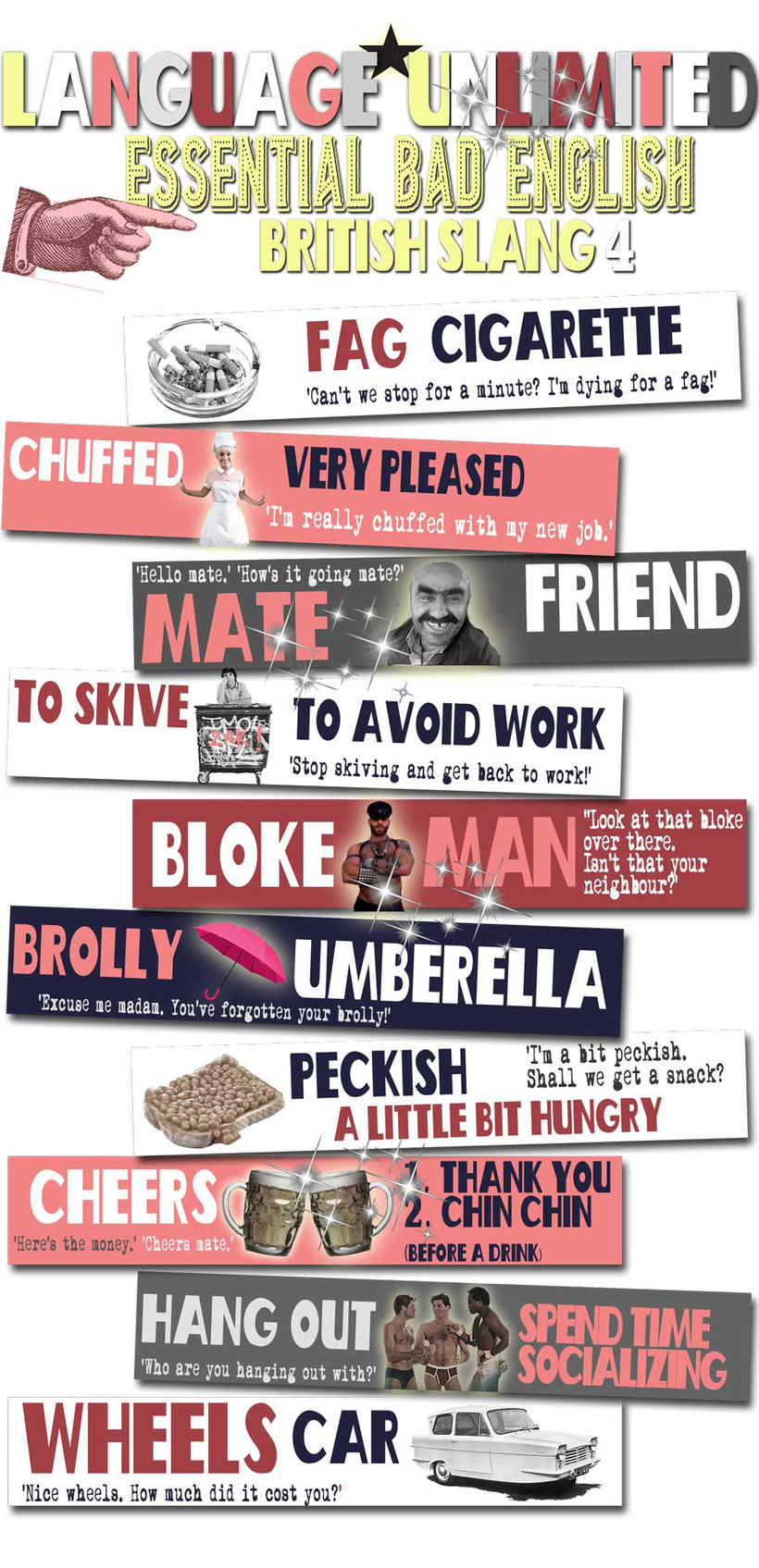
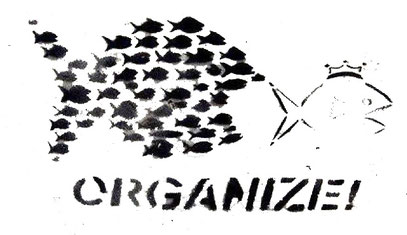
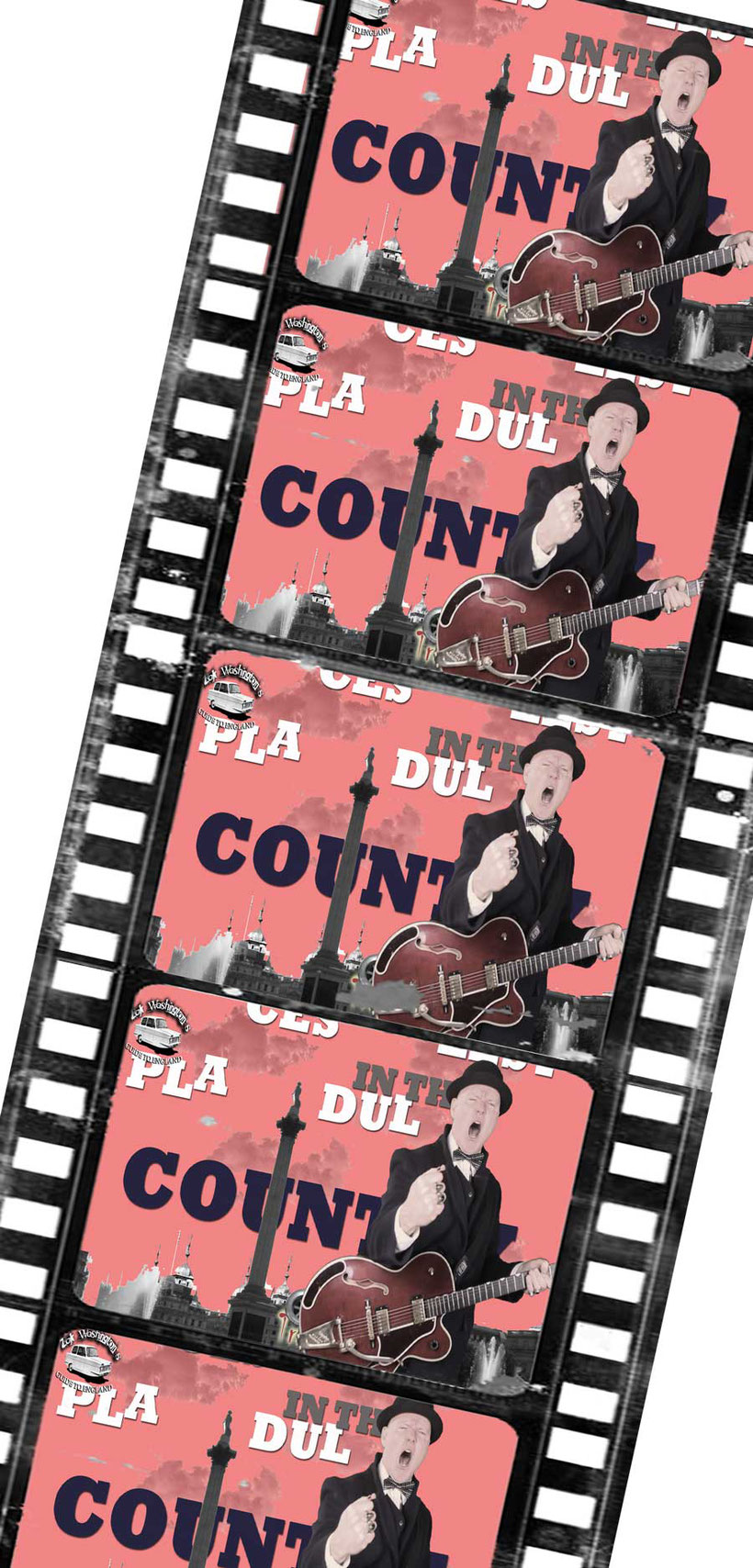
5.4 English language grammar exercise Countable & Uncountable nouns QUESTIONS
#EFL #TEFL #ESOL #ELT #TESOL exercise for students of English
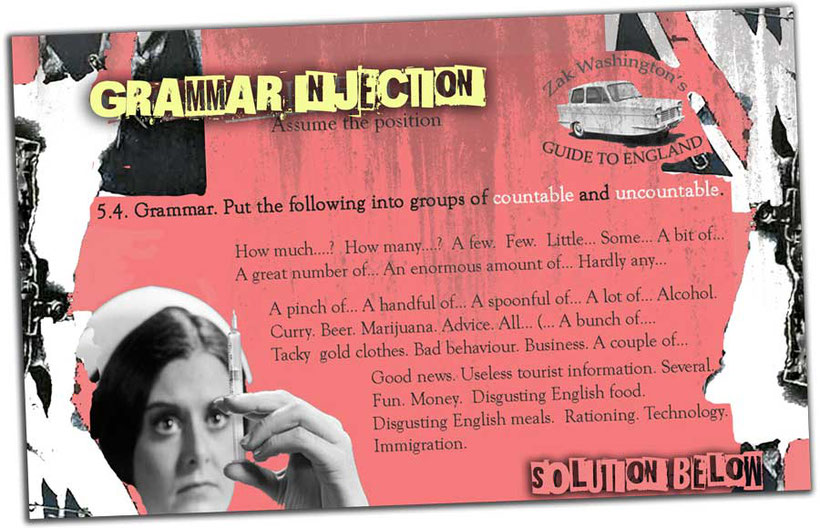
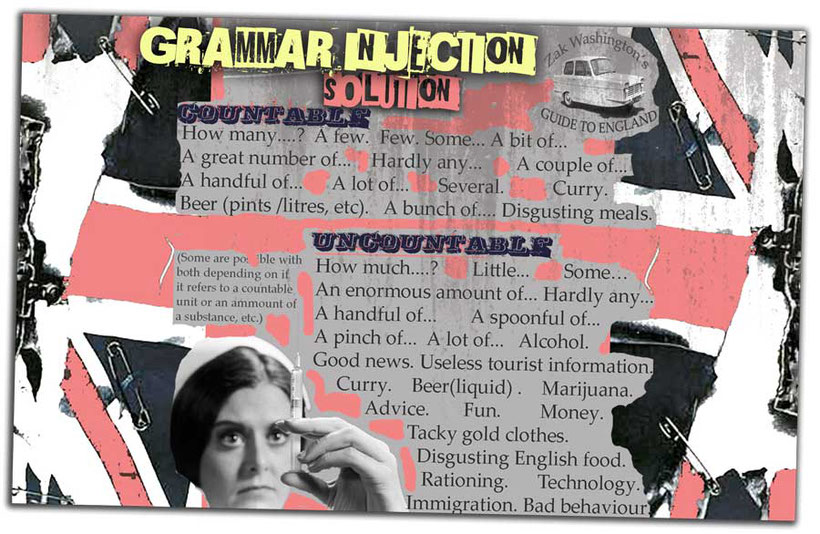
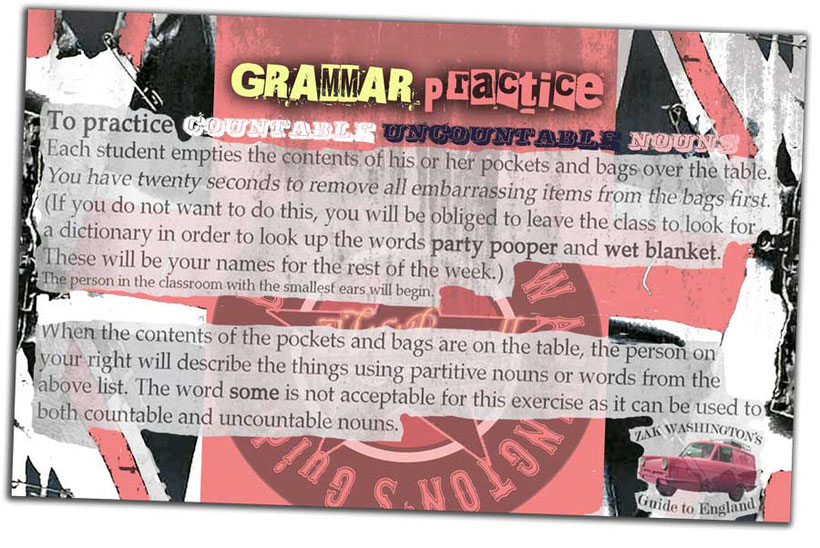
SPEAKING PRACTICE ROLE-PLAY
In this section you will learn all the English vocabulary for how to cook.
We explain step-by-step the instructions for preparing food.
We explain all the vocabulary for utensils that you need.
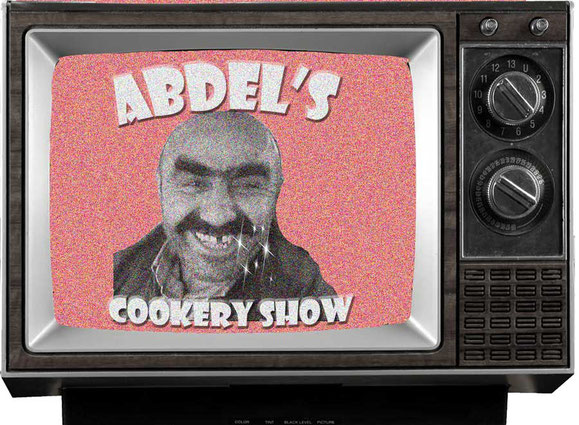
It’s show-time students! Your chance to be famous for five minutes. You are going to come to the front of the class and demonstrate how to cook a traditional recipe from your country.
No excuses from the men of the classroom!
Time to get the apron[1] on and start cooking.
Firstly. The student who is the most chauvinistic in the classroom, will come to the front, (This is not just an excuse to insult each other, serious debates please!) He will draw on the board the following:
Verbs for cooking, cutting and preparing food. Kitchen items and utensils. Useful electrical items.
The other students will look at the following list and give the chauvinist descriptions and instructions:
Ways of cutting To cut, to chop, to slice, to dice.
(SP: Formas de cortar - Cortar, picar, cortar en rodejas, cortar en dados.
IT: Modi di tagliare - Tagliare, tagliare a pezzi, affettare, tagliare a dadi. )
Ways of cooking To fry, to boil, to bake, to roast, to grill, to toast, to warm up, to stir.
(SP: Formas de cocinar - Freír, hervir, hornear, asar, asar, tostar, calentar, remover.
IT: Modi di cottura - Friggere, bollire, cuocere, arrostire, grigliare, tostare, riscaldare, mescolare.)
Ways of preparing food To mix, to blend, to whisk, to beat, to strain, to drain.
(SP: Formas de preparar los alimentos - mezclar, mezclar liquidos, batir, batir, colar, escurrir.
IT: Modi per preparare il cibo) Mescolare, mescolare liquidi, frullare, battere, filtrare, drenare. )
Kitchen utensils A knife, a fork, a dessert spoon, a soup spoon, a tea spoon, a strainer, a colander, a carving knife, a whisk (for cream).
(SP: Utensilios de cocina - Un cuchillo, un tenedor, una cuchara de postre, una cuchara de sopa, una cuchara de té, un colador, un colador, un cuchillo de trinchar, un batidor (para nata).
IT: Utensili da cucina - Un coltello, una forchetta, un cucchiaio da dessert, un cucchiaio da minestra, un cucchiaino da tè, un colino, un colino, un coltello da intaglio, una frusta (per la panna). )
Containers and receptacles A saucepan, a wok, a casserole dish, a frying pan, a baking tray.
(SP: Contenedores y recipientes - Una cacerola, un wok, una cacerola, una sartén, una bandeja para hornear.
IT: Contenitori e recipienti - Una casseruola, un wok, una casseruola, una padella, una teglia. )
Electronic items A blender, a toaster, a kettle, a juicer, a food processor, etc
(SP: Artículos electrónicos) -Una licuadora, una tostadora, una tetera, un exprimidor, un procesador de alimentos,
IT: Articoli elettronici - Un frullatore, un tostapane, un bollitore, uno spremiagrumi, un robot da cucina, ) and anything else that you might think useful.
OK, sit down you chauvinist[2], and let that be a lesson to you! Next time, help your sister with the cooking and do the washing-up afterwards!
Secondly. Prepare a list of ingredients. Pay careful attention to countable and uncountable nouns.
Thirdly. Write the recipe (SP: receta IT: ricetta). Do this in pairs to help each other with any problems. Each person must produce a recipe to present on their own.
Finally. Come to the front of the class and demonstrate the preparation of the recipe to the group. Imagine that you are on one of those terrible cookery TV shows that are popular in your country. The woman in the class who is the biggest feminist will come to front first. Be prepared to answer any questions asked by other students.
GLOSSARY
[1] Apron (SP: delantal IT: grembiule) (noun) Item worn to protect clothes whilst in the kitchen.
[2] (Male) chauvinist (SP: machista IT: maschilista) (noun) like an enormous amount of words in English, this is of French origin. The meaning is quite different. This is a negative word used to describe a man who has a ‘traditional’ out-of-date attitude to a woman’s role and to equality. If you think that a woman’s place is in the kitchen, then you are probably one of them. Your behaviour could be described as chauvinistic (adj.)
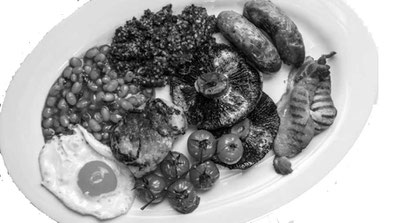
5.5 Homework and Discussion Points Fast food and junk food (SP: comida basura IT: cibo spazzatura)
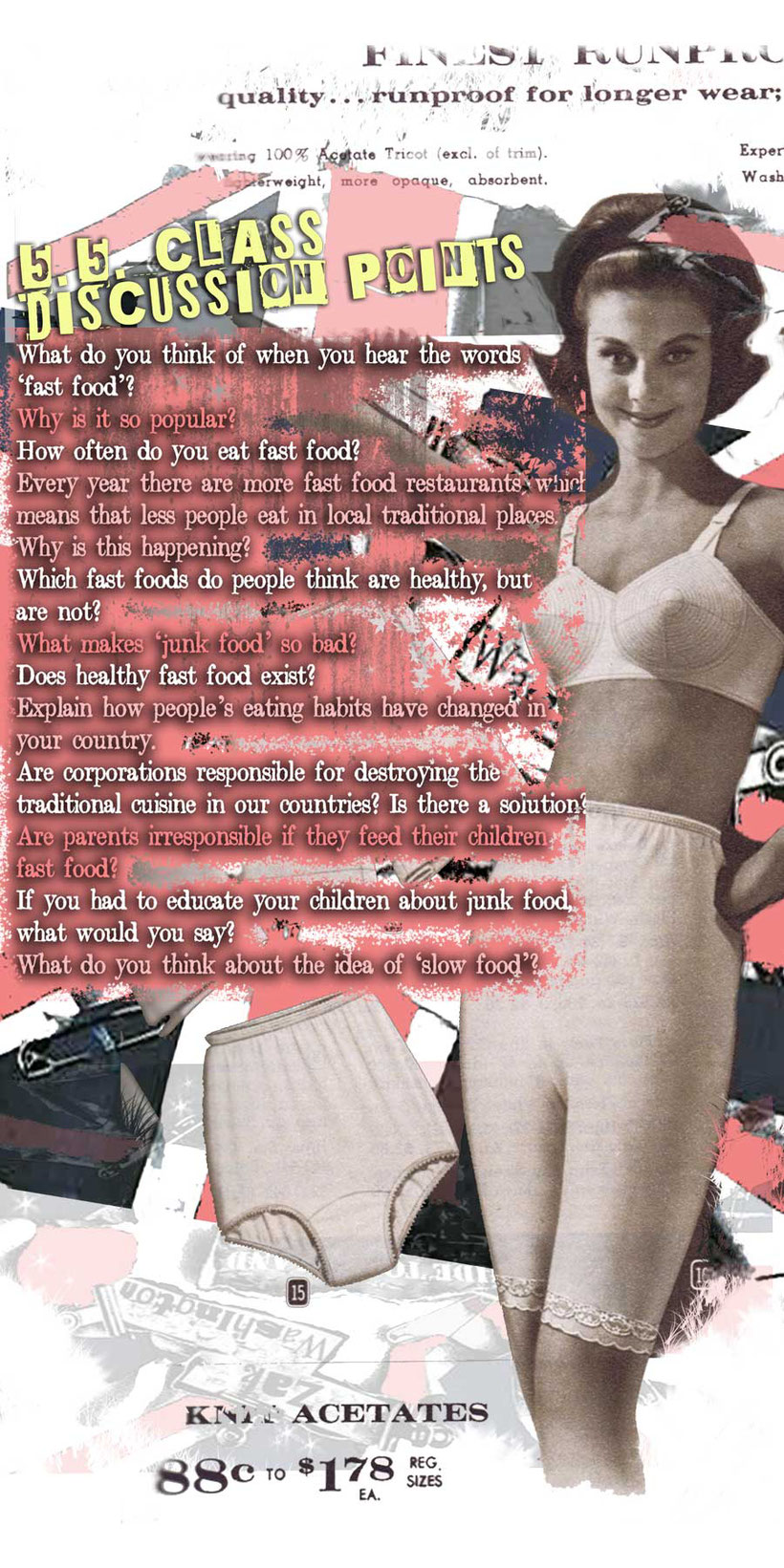

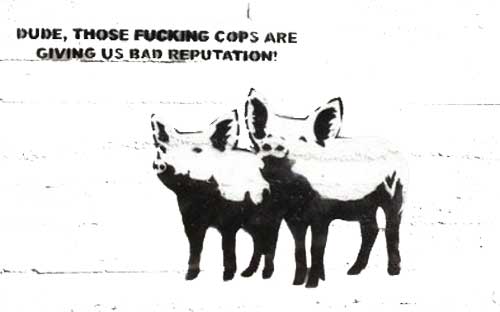

LEARN ENGLISH PRONUNCIATION WITH ZAKWASHINGTON - Reading
SPEAKING PRACTICE PRONUNCIATION
Anja’s guide to speaking perfect English. PART TWO.
Pronunciation reading exercise.
Welcome back to the pronunciation gymnasium. To continue our workout, we shall look at some more difficult vowel sounds. Possibly the most problematic vowel sound for foreign students is the one which can be found in the words: ‘girl’, ‘world’, ‘heard’, ‘bird’, ‘shirt’, and ‘hurt’. Imagine you have just eaten English food for the first time. What would you do? Exactly. You’d be sick. It’s disgusting stuff. Now, the sound that you’d make is something like, ‘uurrrggghhhh!’. It’s long, and it’s ugly. But it’s English. People consider long, clear vowel sounds to be a sign of good English. So to begin, try saying the word ‘first’ with this long sound. Does that sound better? Try this sentence: ‘Sir Persy heard and learnt the word ‘bird’ first.’ (Seven repetitions.)
Another area of complaint seems to be with the pronunciation of the letters ‘OO’. This sound has three main types of pronunciation. ‘Book’ and ‘foot’ look like ‘blood’ and ‘flood’, but are pronounced differently. In fact, ‘blood’ and ‘flood’ are very unusual, as they contain a sound, which is usually expressed with the letter ‘U’ such as ‘but’, ‘cut’ and ‘mud’. There is also the third sound contained in ‘boot’, ‘loot’ and ‘root’, which should sound like ‘suit’, ‘fruit’ and ‘cute’. But don’t get the idea that all English is irregular in pronunciation; it is said that eighty or more percent of vowels are pronounced regularly. So we only need to comment on a fairly limited number of irregularities.
The production of quality pronunciation depends on several important factors. Correct use of the tongue and breath are essential; but equally important is the position of your jaw, and the shape of your face. Another sound that can only be produced correctly if you move your whole face is /æ/. This is sometimes referred to by phoneticians as ‘the happy sound’, again due to the fact that you need a smile to produce it. What a merry language English is! To speak good Spanish, you need a throat infection, to speak good German you need a brain infection, but with English, just smile and learn. Try saying these words: ‘as’, ‘bat’, ‘cat’, and ‘cap’ ; now try saying; ‘us’, ‘but’, ‘cut’, and ‘cup’. Smile for God’s sake! Try this sentence too: ‘My uncle sat back, cup in hand, cat on lap, and napped happily.’
Good pronunciation requires a good command of homophones, that is, two words that share the same sound, but are spelt differently. None of the following words are different in pronunciation: son/sun; meat/meet; where/wear; aisle/I’ll; court/caught; their/there/they’re; won/one; ate/eight; aloud/allowed; flour/flower; and many more. What most students do is to over-complicate things, and try and pronounce too much. Look at the following sounds. The only sound in each that is different is the first one: ‘saw’, ‘bore’, ‘door’, ‘four’, ‘law’, ‘pour’, ‘tore’ and ‘roar’. Each of them contains one consonant and one vowel. The same sound appears in many past simple irregular verbs. This time the structure is: one consonant, one vowel, and one consonant. ‘Caught’, ‘bought’, ‘taught’ and ‘fought’ are all past simple structures with the same sound as: ‘wart’, ‘sort’, and ‘nought’.
Many sounds are not pronounced in English at all. In ‘answer’ the ‘S’ is not pronounced; nor is it pronounced in ‘island’. The ‘T’ is not pronounced in ‘castle’, ‘bristle’, or ‘whistle’. In ‘knowledge’ there is no ‘K’ sound, and most words that end in ‘MB’ have a silent ‘B’, for example, ‘comb’ (the thing that you use to put your hair in order); ‘thumb’ (that’s the largest digit on your hand); ‘climb’ or ‘lamb’. Many other letters are not pronounced. The word ‘through’ contains seven letters, but only three individual sounds (phonemes), and is pronounced as one syllable. ‘Thorough’, which means ‘complete’ or ‘total’, has eight letters, four sounds, and two syllables. ‘Chocolate’ has only two syllables; ‘vegetable’ and ‘comfortable’ have only three. ‘Separate’ looks as if it has three syllables, but really has only two. ‘Separated’ on the other hand has one more letter than ‘separate’ but has four syllables!
To finish, we should mention just a few more of the irregularities and difficulties. But don’t get depressed as we are only looking at the most difficult stuff here; the rest is far easier. ‘Beard’ is a troublesome word, for many students. It’s different from ‘bird’. Just say the word ‘beer’, and then add a ‘D’ on the end. Easy! ‘Rough’ is a fairly common word with complicated pronunciation. It should sound the same as ‘tough’, (both have the basic meaning of ‘hard’). ‘Cough’ is what you will do if you smoke too much; it too ends with a sound that is like ‘off’.
Don’t forget kids, the world of English is very competitive. It’s a jungle out there. That’s ‘jungle’, which has the ‘U’ sound in ‘cut’, ‘done’, and ‘gun’, and should begin with the ‘J’ sound in ‘judge’, ‘jury’ and ‘jail’, which means ‘prison’. But don’t worry, no-one has ever been sent to jail for having bad pronunciation. Why not? Because they haven’t built a jail big enough to fit all the Scots, Welsh, Australians and Americans...
LEARN ENGLISH PRONUNCIATION WITH ZAKWASHINGTON - Video tutorial #1
This is the first in our series Learn English Pronunciation with ZakWashington video.
We explain the most important concept if you want to speak British English like a native speaker. You will also learn the phonemes and the symbols of the International Phonetics Alphabet (IPA).


Dear Student. Here is your invitation for the event of the year. Please bring a friend. Unfortunately we can only allow entry to those with a subscription to Zak Washington's Youtube channel and Twitter account.
